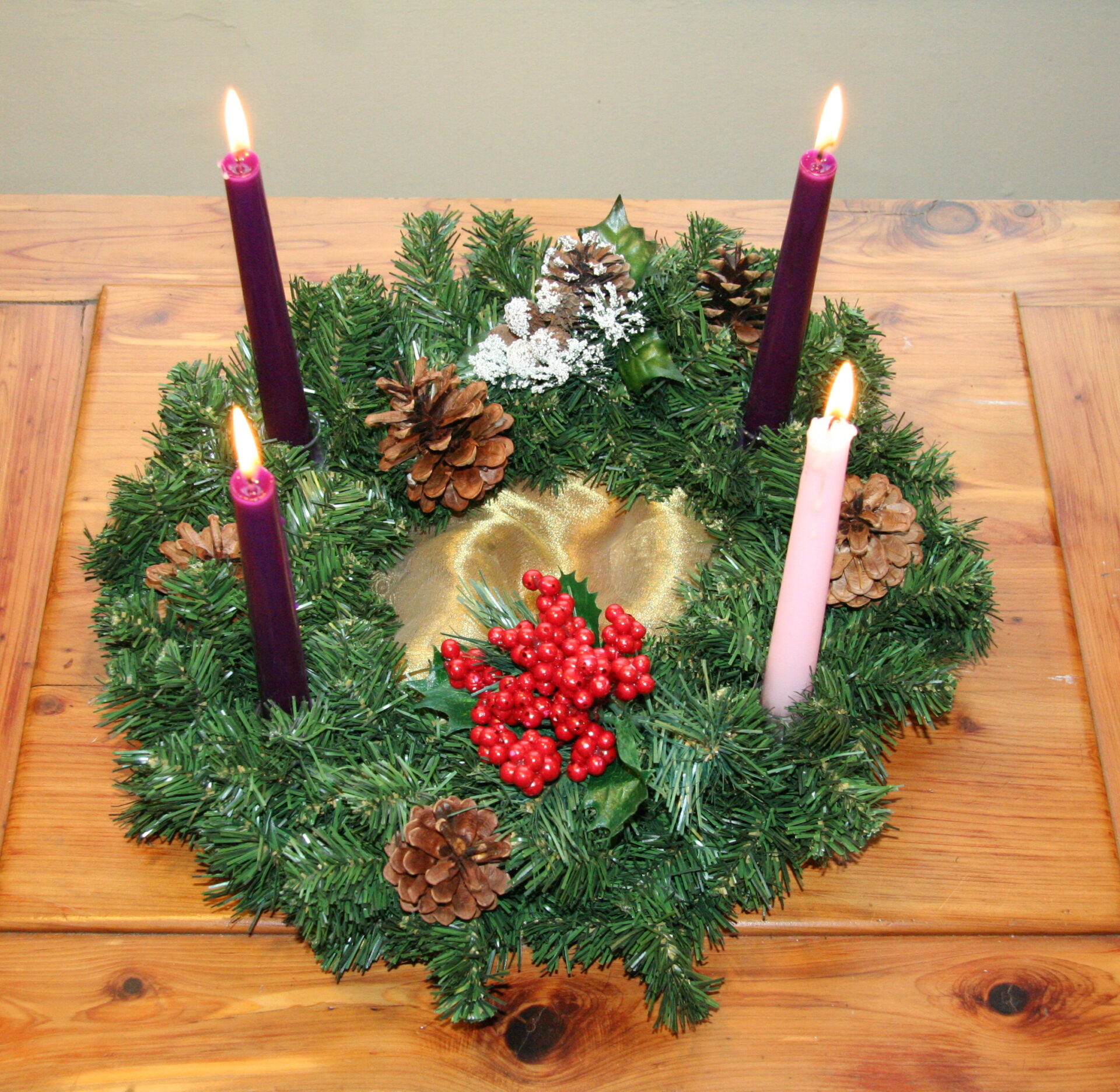In today’s card from our Advent calendar, we lean into the custom of making Advent wreaths. What are they? Where do they come from? What do they symbolise? These questions will be answered in this article.
Modern Advent wreaths are often made on a wire wheel, usually from the branches of noble conifers as well as laurel and mahogany leaves. Four candles are placed on the wreath, usually white, but sometimes coloured according to the colour of the liturgical vestments for the individual Advent Sundays, i.e., three violet candles and one pink, or red, whose colour expresses the joy of awaiting the Messiah.
Rich religious symbolism
The symbolism of the Advent wreath is very rich. The round shape of the wreath symbolises infinity, eternal life and God. The branches of an evergreen conifer are a symbol of life and togetherness. The four candles, lit each Sunday of Advent, symbolise approaching the true light, Jesus Christ. Each candle also has its own meaning. The first is the Candle of Hope, the second is the Candle of Peace, the third is the Candle of Joy and the fourth is the Candle of Love. The whole is a symbol of hope for the victory of life over darkness. It is also a sign of the Christian community keeping vigil in prayer. Ribbons in red and purple are attached to the wreath, which in turn indicates the joy of expectation and, at the same time, the need for inner purification, and moral preparation for the coming of Christ.

Origin of the wreath
The tradition of the Advent wreath comes from the Protestant tradition, where two wreaths are prepared at once, one is placed on the door of the house, and the other is usually placed in the room where the life of the whole family is concentrated. The Advent wreath first appeared in 1833 in a care home for abandoned children, on the outskirts of Hamburg. The origin of the Advent wreath is linked to the work of Johann Hinrich Wichern, a German pastor and theologian who initiated the so-called Inner Mission, which aimed at the renewal of Christian life. Wichern ran a kind of ‘children’s village’ and introduced a special service for his charges for the Advent season to prepare them for Christmas. This service took place in a room decorated with fir branches and began with the lighting of a candle placed on a large candlestick, followed by the reading of the word of God, songs, prayer and reflection.
The service was held every day and one candle was lit each day, the candles for Sundays being larger than the others. The custom of preparing an Advent wreath was very quickly adopted in Protestant circles mainly in the north of Germany and especially among the Hanseatic towns. It was probably adopted by Catholics in the 1930s. Although, the first mention of the appearance of this custom on Polish territory appeared in Wroclaw as early as 1925.
Advent wreaths of today
This tradition has remained alive to this day, only the number of candles has been reduced – instead of 24, we light four, one on each Sunday of Advent. In the Protestant tradition, the blessing or ordination of the wreath is not practised. In the Catholic tradition, the blessing is done either at the Mass that begins the Advent season or at the evening service preceding the first Sunday of Advent.
